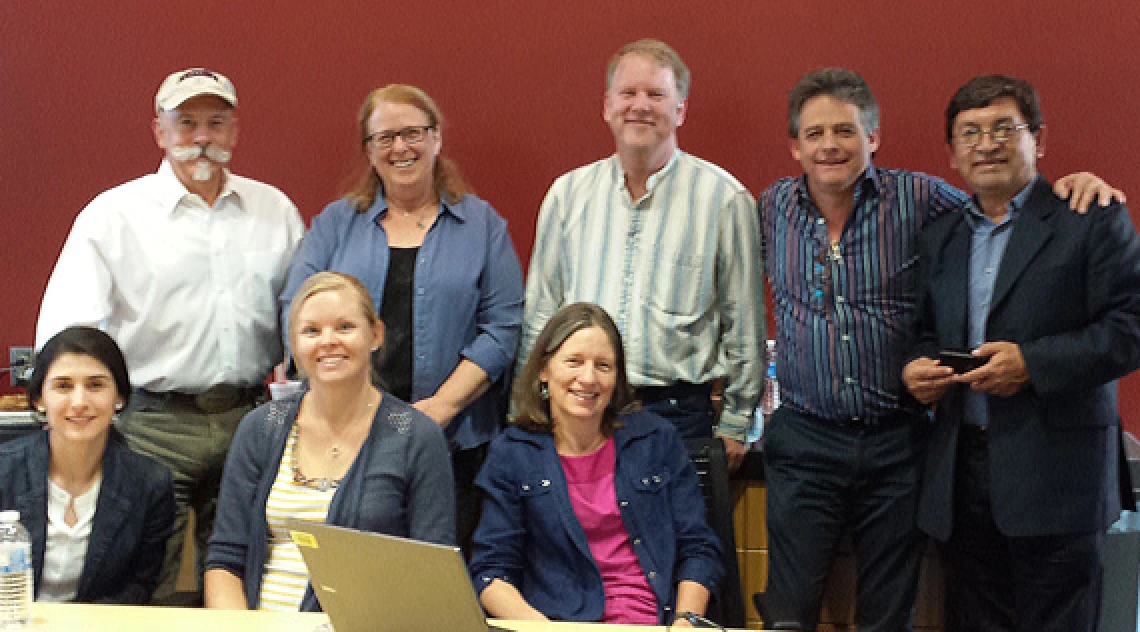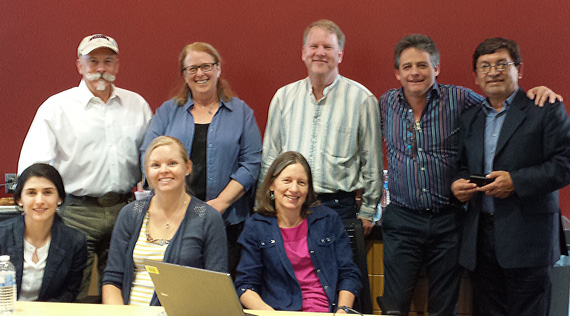UA SRP Hosts Bolivian Mining Group

 A group from Summit Mining and the San Cristóbal Mine in Potosí, Bolivia visited the University of Arizona Superfund Research Program (UA SRP) in March 2015 to establish a collaboration on best mining practices. The two groups first met at the September 2014 Latin American Conference on Compatible Mining: Protecting Vulnerable Populations and the Surrounding Environment which was held in San Luis Potosí, México. The visitors were Mario Velasco Sánchez, Superintendent of Environment, San Cristóbal Mine, Javier Diez de Medina, Corporate Social Responsibility and Environment Manager, San Cristóbal Mine, and Craig Patrick, Executive Vice President, Summit Mining International.
A group from Summit Mining and the San Cristóbal Mine in Potosí, Bolivia visited the University of Arizona Superfund Research Program (UA SRP) in March 2015 to establish a collaboration on best mining practices. The two groups first met at the September 2014 Latin American Conference on Compatible Mining: Protecting Vulnerable Populations and the Surrounding Environment which was held in San Luis Potosí, México. The visitors were Mario Velasco Sánchez, Superintendent of Environment, San Cristóbal Mine, Javier Diez de Medina, Corporate Social Responsibility and Environment Manager, San Cristóbal Mine, and Craig Patrick, Executive Vice President, Summit Mining International.
The day-and-a-half-long meeting was held to discuss a wide range of issues at the San Cristóbal Mine and in turn to discuss UA SRP research in areas of interest including revegetation, groundwater contamination, acid rock drainage, mining educational modules, and community engagement. Attending this meeting was UA SRP Director Raina Maier, collaborator Mary Poulton from the UA Lowell Institute for Mineral Resources, UA SRP investigators Mark Brusseau, Jim Field, and Julie Neilson, and UA SRP trainees Juliana Gil and Linnea Herbertson.
Over the next several days, the visitors then toured four mine sites at which the UA SRP is currently working. These included three active and operating mines: Mission Mine (ASARCO); Carlota Mine (KGHM International); and Resolution Copper (Rio Tinto). The fourth site was the Iron King Mine and Humboldt Smelter Superfund site. Here, UA SRP Trainees Juliana Gil and John Hottenstein took the visitors on a tour of the UA SRP’s 5-year revegetation field trial that demonstrates the success of direct planting into compost-amended legacy tailings.  This field trial is yielding exciting results showing that direct planting may be a viable technology for many legacy and modern mines and from which the concept of fertility islands has arisen. Research results suggest that it may not be necessary to compost and provide seed to an entire site, but rather to concentrate on “island” areas that will spread out following plant establishment.
This field trial is yielding exciting results showing that direct planting may be a viable technology for many legacy and modern mines and from which the concept of fertility islands has arisen. Research results suggest that it may not be necessary to compost and provide seed to an entire site, but rather to concentrate on “island” areas that will spread out following plant establishment.
As the next step in this collaboration, Maier and Field have been invited to visit their colleagues in Bolivia. There, they will tour the San Cristóbal Mine, discuss in more detail potential collaborative research projects, and develop a mechanism for Bolivian students from Tomás Frías Autonomous University to visit the UA for specialized training.

